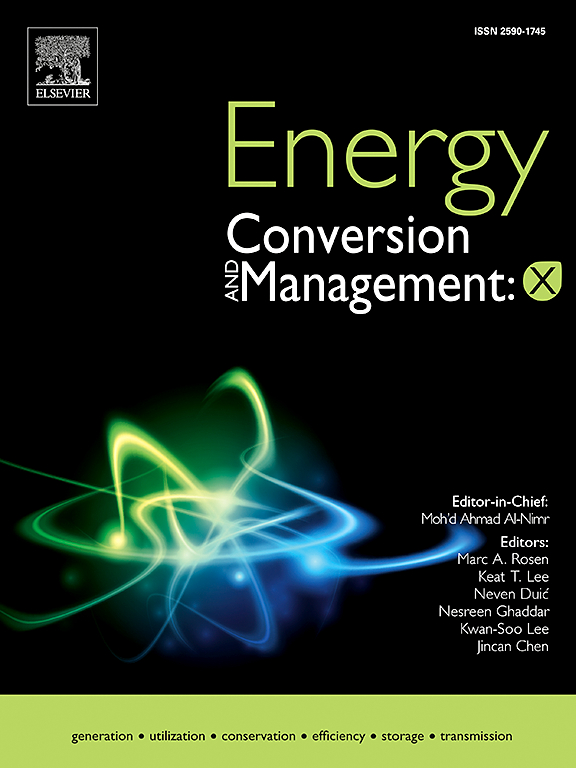Seasonal assessment of a hybrid CCHP-photovoltaic system coupled with CAES for a residential building in Rio de Janeiro: Energetic, exergetic, exergoeconomic and environmental analysis
IF 9.9
1区 工程技术
Q1 ENERGY & FUELS
引用次数: 0
Abstract
Addressing the issues of energy transition requires good practices for better energy management and increase of efficiency, alongside a widespread utilization of renewable energy sources and energy storage, optimized to the consumers’ demands. In this context, a numerical simulation is developed to investigates a trigeneration (electricity, heating, and cooling) scenario applied to a typical on-grid residential building in Rio de Janeiro, Brazil. The studied configuration for the hybrid combined cooling, heat, and power system is mainly composed of photovoltaic panels; a small-scale compressed air storage system with compressors and turbines with intercoolers and preheaters and two air storage tanks; and water tanks functioning as thermal energy storages. The system undergoes an evaluation through an energetic, exergetic, exergoeconomic and environmental (4E) analysis in a quasi-steady state regime. The yearly investigation allows to assess the seasonality effect on the system, and its impacts of different parameters. The results indicate that the proposed system can sustain 94.3 % of the building electric demand. Considering one year of operation, the system has an electric, cogeneration and trigeneration efficiencies of 37.6 %, 41.1 % and 44.3 %, respectively Regarding the exergy performance, the charging process is responsible for most of the exergy destruction of the system due to the low exergy efficiency of the photovoltaic panels. The discharge operation registered a low exergoeconomic factor compared to the charging one. The system operation was able to abate 20.34 tCO2eq emissions.

求助全文
约1分钟内获得全文
求助全文
来源期刊

Energy Conversion and Management
工程技术-力学
CiteScore
19.00
自引率
11.50%
发文量
1304
审稿时长
17 days
期刊介绍:
The journal Energy Conversion and Management provides a forum for publishing original contributions and comprehensive technical review articles of interdisciplinary and original research on all important energy topics.
The topics considered include energy generation, utilization, conversion, storage, transmission, conservation, management and sustainability. These topics typically involve various types of energy such as mechanical, thermal, nuclear, chemical, electromagnetic, magnetic and electric. These energy types cover all known energy resources, including renewable resources (e.g., solar, bio, hydro, wind, geothermal and ocean energy), fossil fuels and nuclear resources.
 求助内容:
求助内容: 应助结果提醒方式:
应助结果提醒方式:


